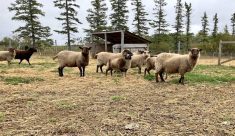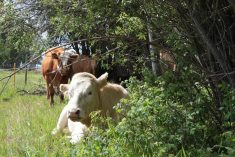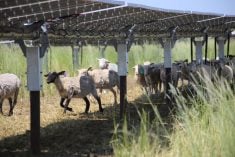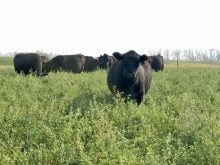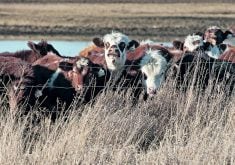Beef 911 Knowing the type will give you a head start on treatment for next calving season
Every calving season veterinarians are called on to examine calves with a multitude of problems. Some are herd related but many are individual problems of no concern to the rest of the herd. Most cases fall into a few broad categories. Each category has a much different treatment regime. This article will break out these different categories and hopefully make it easier to determine the course of treatment.
Clinically with calves, we need to differentiate between whether the condition involves the lungs (pneumonia), intestines (scours), navel (omphalophlebitis) or involves a multitude of miscellaneous conditions.
Read Also
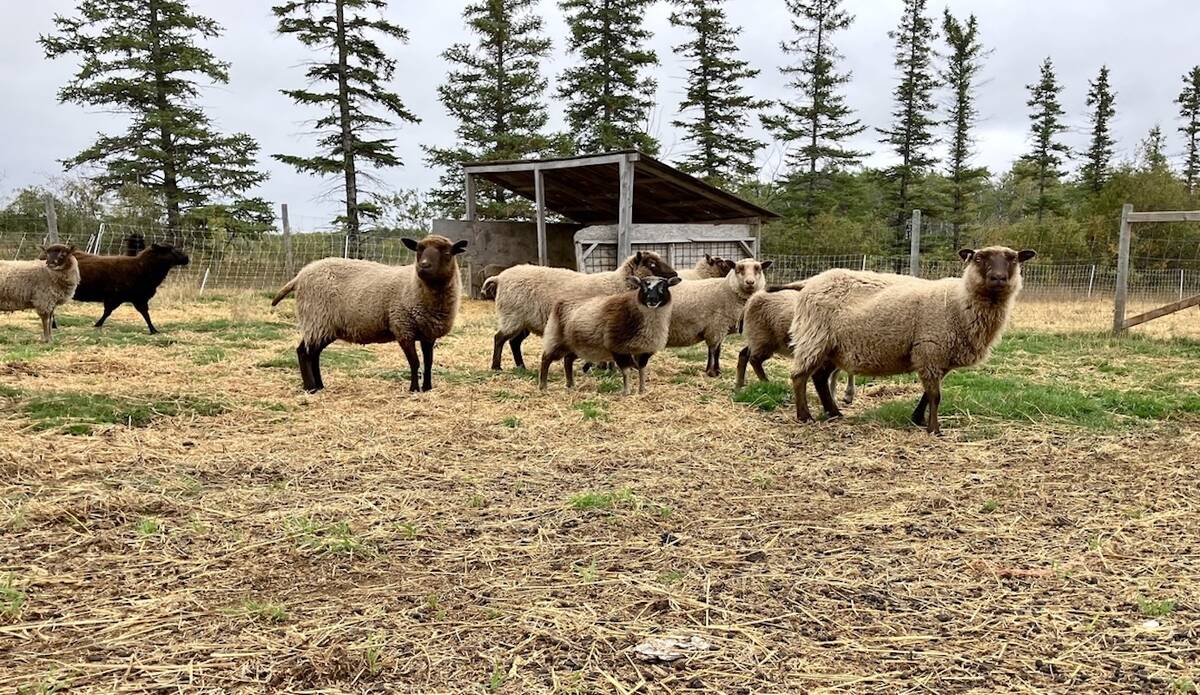
Mosquito-borne virus could be devastating to sheep breeding operations
Cache Valley virus, a mosquito-borne disease that infects small ruminants, could be a devastating hit to small operations.
The two main diseases, scours and pneumonia, often are treated much differently and may not be as easy to tell apart as one thinks. Scours may initially present as a very dopey, heavy-breathing calf. The calf may be quite acidotic and is attempting to blow off the acid through an increased respiratory rate, fooling you that he has pneumonia. A calf born selenium deficient may have heart issues if the heart muscle is affected. The lungs will start to fill with fluid because of the heart failure, and again respiratory rate will be increased. While specific antibiotics have been developed for pneumonia they often are not the same ones we use to treat scours.
Also the best initial treatment for scours is to give replacement fluids as the dehydration is what kills the calf. Many causes of scours are viral, against which antibiotics don’t work. You can see making the distinction between which organ system is involved can be a difficult one and one your veterinarian may even struggle with at times.
Colostrum
As mentioned numerous other times before, we can never stress enough the importance of good-quality colostrum in giving calves a head start in life. Their ability to fight off disease challenges is much greater. Many cases of pneumonia, scours and septicemias (blood-borne infections) can be attributed to not receiving adequate colostrum.
The navel area is another area to pay close attention to as it is a common source for entry of infectious organisms into the body. Again we need adequate colostral uptake. Watch the area for signs of swelling and an arched back and tucked-up calf. If you palpate the navel area and it is painful, that is a telltale sign infection is present. Backwards calves or those derived by C-section have their navels rip off short and are much more susceptible to navel infection.
At our clinic, with any calves born by C-section we purposely separate the navel by hand further down the cord so the calf has a decently long navel cord when it is born. Some producers if they have a problem will even give prophylactic antibiotics at birth under the supervision of their veterinarian to counteract navel ills. If the navel infection spreads internally it has a good chance of landing in the joints and a severe arthritis ensues. Make sure and differentiate between navel infection and a simple hernia which may require surgery.
Lameness
Lame calves are another common condition with young calves. Again, you need to differentiate whether it is arthritis from a navel infection, trauma causing a sprain strain or trauma causing a broken leg. Each condition requires different treatment. The navel infection must be treated with drugs, which will get into the joints. Sprains are just left to convalesce and the broken legs need immediate attending by your veterinarian. If breaks are caught soon enough the prognosis and chances for recovery are very good. The lower the break the better. Young calves that are growing heal fast and put down bone very quickly so in three to four weeks we often have a complete recovery.
Calves commonly will get stepped on by cows in heat so having creep areas where they can separate themselves from the cow herd will pay dividends in fewer calf injuries.
Creep areas are also very good at getting calves started on creep feed so preventives for coccidiosis such as deccox can be added to the feed. Calves are naturally inquisitive so products such as diatomaceous earth give calves something to lick on rather than dirt, roughage and stagnant water where their odds of picking up something harmful is much greater. Cryptosporidiosis, another diarrhea disease of calves, spreads very similar to coccidiosis so prevention for one may help in prevention of the other.
Older calves become stronger and more resistant to picking up the common calfhood diseases such as scours or pneumonia. The four- to eight-week age is where the intestinal accidents and stomach ulcers develop. These conditions were gone into detail in a previous article but suffice it to say they are individual fluke-type cases. It is probably most important to have a post-mortem done on sudden deaths to rule out infectious causes which could spread to other herdmates. Otherwise you can rest assured it was one of these fluke intestinal conditions of which you have no control over.
This spring try and differentiate these different categories of problems with young calves. You will then be treating the right problem and your success rate will drastically improve and steps can be made for prevention of further cases.



